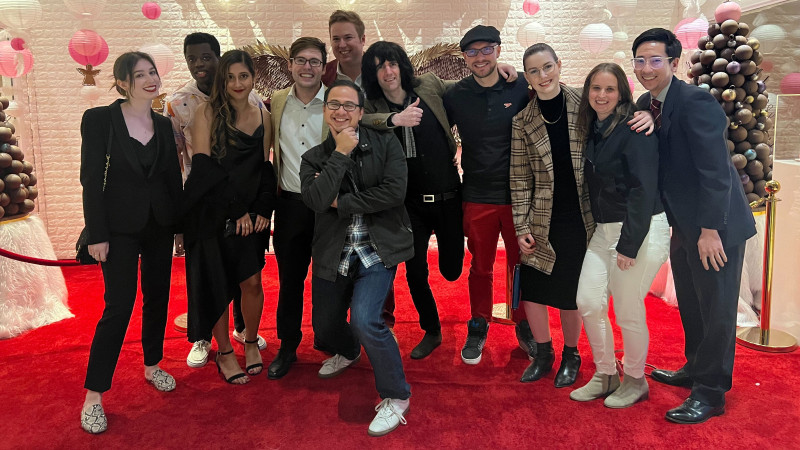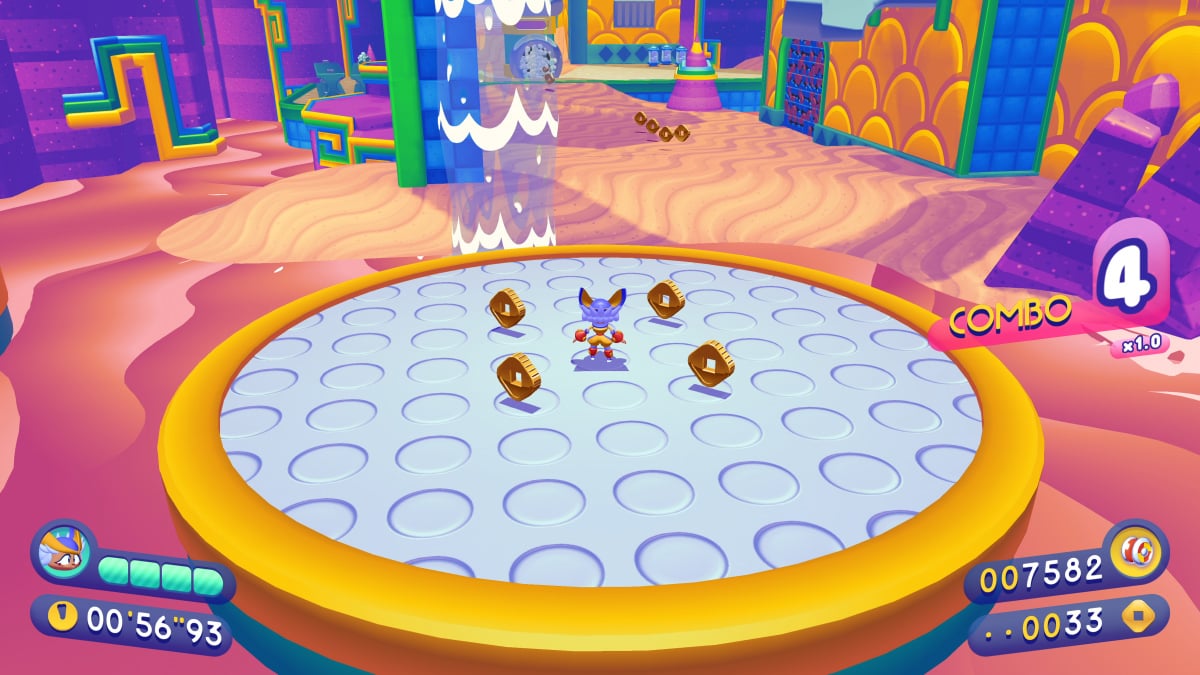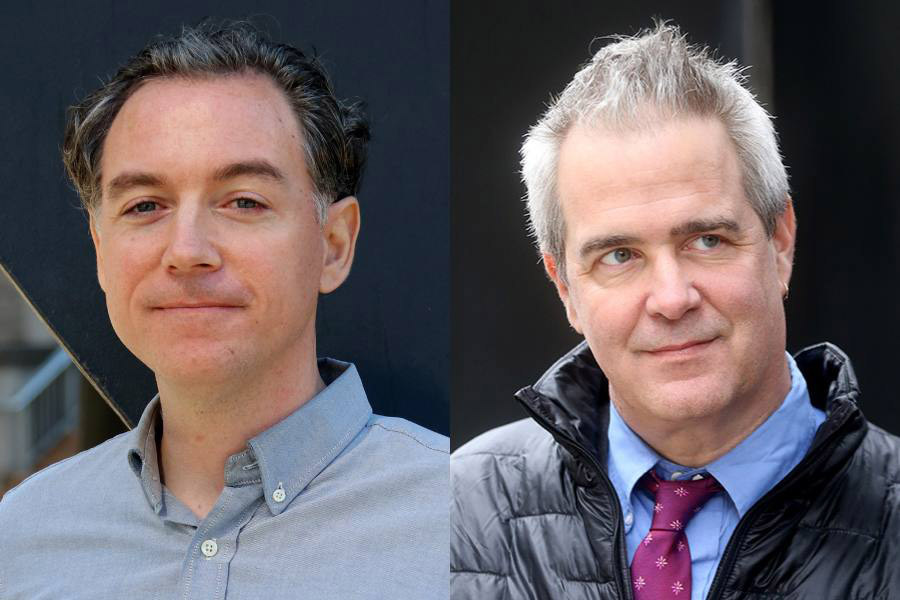In an era dominated by technological innovation, artificial intelligence (AI) has emerged as a cornerstone for driving business success and operational efficiency. Amidst this rapidly evolving landscape, white label AI tools have become pivotal for companies seeking to harness the power of AI without the extensive…
Penny’s Big Breakaway Preview – Bauhausian Rhapsody – Game Informer
Introduction
Sonic Mania is widely regarded as one of the blue blur’s best games. More than six years after its 2017 release, that sentiment remains as strong as ever, even after recent outings like 2022’s Sonic Frontiers and this year’s Sonic Superstars. While published by Sega, longtime Sonic fans who grew up playing the series, like Christian Whitehead, Hunter Bridges, Dave Padilla, Brad Flick, Tom Fry, and others, led the game’s development. And without speculating too much, the degree of separation afforded to these fans-turned-developers allowed Sonic Mania to feel like both a fresh breath of air and a return to form.
Not wanting to wade too deep into the world of independent contracts and wishing to maintain the friendship between each other strengthened in Sonic Mania’s development, the five of them formed Evening Star months after the game’s release. Studio CEO and executive producer Padilla, CTO and game director Bridges, creative director and lead engine architect Whitehead, design director Flick, and art director Fry all admit the easy follow-up was right there: A Sonic Mania-type 2D platformer. It’s what fans of Sonic Mania wanted, and to their credit, they worked with Sega on potential sequel ideas before amicably parting ways. But, unsatisfied with the easy answer, Evening Star got to work on a 3D momentum-based platformer inspired by Tony Hawk’s Pro Skater, an early 20th Century ballet, and 1995’s Jumping Flash on PlayStation.

Evening Star
“We always had this idea of, ‘Wouldn’t it be great if we had a character that could use a yo-yo to do different moves?’” Whitehead says. “Initially, we jotted them down on a 2D playfield, but there were several concurrent themes swirling in the background. At least for me, my perspective as a developer is I’ve spent the last decade working exclusively on 2D pixel art, so I really wanted to expand and prove that I could do something more than just one particular genre.”
Whitehead says he’s aware Penny’s Big Breakaway is another platformer but says it’s a different flavor in a different dimension. After playing more than two hours of the game myself, experiencing the first three of 11 regions in the world of Macaroon, including three different boss stages and special Star Globe bonus levels, that much is clear. Knowing the development leads of Sonic Mania are responsible for what I play, it’s impossible to deny the momentum-based inspiration that lives in both titles. But Whitehead’s right – even beyond the obvious shift from 2D to 3D, Penny’s Big Breakaway features a different flavor. It is not just a new flavor for these developers but something unique in the long-standing platforming genre.
Breaking the Standards

Breaking The Standards
I’m terrible at the game, at least for the first handful of stages. It doesn’t help that I just watched Bridges speed through them like someone with intimate knowledge of every stage’s challenges, but I’m slow and struggle to combo yo-tagonist Penny’s yo-yo-based moves across ramps, flag poles, gaps, and more. Penny can toss her yo-yo forward to attack enemies and break barrels with a button on a controller or, more curiously, by flicking the right stick in a direction. And that directional input is independent of Penny, meaning you can flick the yo-yo to her right while she walks left. It’s admittedly bizarre at first – not because it doesn’t feel good, but because it’s so different from how I typically interact with the combat and moveset of a 3D platformer mascot.
In the same vein, Penny can double jump, but instead of gaining a good amount of height with a second jump, she gains a barely noticeable amount; the purpose of her double jump isn’t height but a stop in momentum, Bridges tells me. She can dash by tossing her yo-yo forward, performed by flicking the right stick in the same direction twice, and she can swing left and right, forward and backward, on her yo-yo anywhere in the air as well.

Although it takes me some time – something I welcome because it’s rare to experience a new moveset that challenges my preconceptions of a genre – I finish my Penny’s Big Breakaway play time with the realization that it’s not a 3D platformer in the vein of something Nintendo might create, another challenged preconception. On the one hand, it’s a Tony Hawk’s Pro Skater-inspired platformer with an emphasis on momentum that will appeal heavily to speedrunners and time trial fans, with a constant score and Devil May Cry-style combo tracker on the right side of the screen, too. On the other, it’s a team’s love letter to the weird and sometimes broken platformers of the 3D genre’s early days. Together as a complete package, it rules.
“The rules [of 3D platformers] at that stage weren’t really established that well,” Whitehead says. “I remember growing up playing a lot of PlayStation games where they were maybe a bit rough around the edges but trying to grapple platforming mechanics in 3D, and I felt really inspired by that era. I experienced that as a kid, but I wanted to experience that as a developer.”
A Roundtable Philosophy

A Roundtable Philosophy
Whitehead, admitting creative selfishness, says he wanted to try and make a PlayStation-style 3D platformer that fixes the problems he experienced growing up with the genre. The small slice I’ve played proves Evening Star is on the right path. But in speaking to others within Evening Star, like Bridges, Fry, Flick, and Padilla, it’s clear everyone is all-in on that idea. Even Fry, the art director on paper, says he was involved in all kinds of decisions outside of his development realm, a philosophy everyone else expresses too. “The collaborative effort is an intrinsic part of the team,” Fry says. “Not one person has an idea and everyone follows them like the Pied Piper with it. It’s something where we believe everyone has something of value to throw into the pot, and with the art, that’s certainly no different. I refer to it as a roundtable philosophy.”
That collaborative energy even made its way into the so-far-amazing score of Penny’s Big Breakaway, which utilizes a wide range of weird synthesizer instruments, instrumentation from genres like Latin and Calypso, and more to create a jazz-like symphony of music. Bridges, Whitehead, and others in the team contributed to the score in various ways, even after Evening Star hired Streets of Rage 4 and TMNT: Shredder’s Revenge composer Tee Lopes, who the team also worked with on Sonic Mania, and Sean Bialo to create the score.
Performance Art

Performance Art
If one aspect of Penny’s Big Breakaway speaks most to its early PlayStation inspiration, it’s the art direction. Inspired by the early 20th Century Triadisches Ballett and the Germanic Bauhaus art movement from the same period, combining colorful abstract ideas with primitive geometry, the world of Macaroon feels like one big performance. Your social status is defined by the performance you can give to denizens of the world. Every stage ends with a “Busker” bonus that requires quick and accurate QTE sequence completion to add additional points to your total score. Within each stage are three denizen challenges, like collecting four missing tax forms for an electric company while riding Penny’s yo-yo like a unicycle, and during the Busker bonus, the denizens you help watch you perform.
Even the conceit of the narrative speaks to the idea of performance art being everything – Penny attends a talent show after finding a special yo-yo with an insatiable hunger and, instead of wowing the emperor with a showstopping performance, the yo-yo eats the emperor’s clothes. She spends the rest of the game running further and further away from the emperor and Macaroon’s capital, chased to the world’s edges by the emperor’s ever-present penguins, only temporarily slowed by your efforts and never outright defeated.

“We want the game to keep the flow and dribble going,” Bridges tells me. “We really wanted to have that rhythm […] and never interrupt that. It’s a game where the most skilled players can theoretically make it through a level in an unbroken string of moves. That’s Penny’s masterful performance.”
That’s why Evening Star controls the camera at all times, which requires a flip in my brain. With three denizen challenges to complete and three Show Pieces to find in each level, I want to explore every nook and cranny. But without camera control, I can’t, and I hate this at first. It’s only after realizing that if Evening Star isn’t allowing the camera to take me here or there, then there isn’t anything to miss that I begin to play on the team’s terms. This switch is freeing, realizing Penny’s platforming playground is predicated on my ability to keep moving forward to where Evening Star was taking me in its design. With thoughtful movement and a keen eye, completing every challenge and finding every Show Piece feels intrinsic to Penny’s “performance” in each stage.

The game clashed with every notion I had of 3D platforming. I wanted to take things slow; I wanted to search every corner for something; I wanted to take my time. But Penny’s Big Breakaway is a welcome antithesis to everything (mostly) Nintendo had taught me about this genre. It’s a bold design choice and one I would have called risky on paper. In talking with Evening Star, it’s clear it understood that risk going into its first original game and IP. However, each member I spoke to expressed humble confidence in their respective facets of the game’s development.
“There are a lot of skills we really excel at when making games, and a lot of specific nuances we bring to the table because of our team dynamic and our tools, and I don’t think it’s going to be a complete surprise,” Padilla says. “I think a lot of folks are going to see this as something completely new and something completely original, but in terms of what we’ve done before and what we’re doing now, and hopefully what we’re doing in the future, folks are going to be able to connect the dots.”
This article originally appeared in Issue 362 of Game Informer.
National Change Your Password Day – 2024 – Best Practices

EXECUTIVE SUMMARY:
National Change Your Password Day is celebrated on the first of February each year, as a day of awareness.
As you already know, credential exploitation is unbelievably profitable for cyber criminals. More than 775 million credentials are currently available for sale on the dark web. Bank account details sell for more than $4,000 each.
Regular password rotation, combined with adherence to password creation best practices, prevents hackers from guessing passwords, using tools to crack passwords, and from effectively weaponizing credentials purchased through underground marketplaces.
National Change Your Password Day might not have the allure of other holidays (the naming consultants were apparently on vacation when it was created), but the day serves as a reminder for organizations to enhance password security measures.
Unauthorized organizational data access could result in lost revenue, lost market share and lost company credibility. But stop losing sleep over it. Upgrade your password security strategy with the following tips:
7 easy password security upgrades that you can implement today
1. Identity and access management (IAM). Automated identity and access management solutions boost security and provide administrators with greater control over users’ access to systems.
In turn, IAM empowers organizations to prevent identity theft, to limit data loss, and to stop unauthorized access to sensitive business data.
2. Educate employees about best practices. Remind in-office employees to avoid writing passwords down on sticky notes. Tell employees not to save passwords to browsers, as a wide range of malware and extensions can extract sensitive data from them.
Inform employees about the risks of using the same password over and over again, with different numbers at the end. Explain that hackers know that people commonly end passwords with exclamation points. Reinforce information about the risks associated with sharing login credentials.
These are just a handful of specific, yet extremely important, things about which to educate employees.
3. Limit the number of allowed password attempts. While it’s true that employees occasionally forget their passwords, cyber criminals are liable to exploit access attempt opportunities for their own gain.
In a classic example, a cyber criminal may obtain an employee’s email address, and then request a password reset. Depending on the reset set-up, the cyber criminal may attempt to match the recovered password to a variety of different accounts and systems, in an effort to break in.
Placing a limit on the number of allowed password attempts increases password security, as it reduces the chance that someone will successfully manipulate systems by matching a password and usernames.
4. Audit systems for extraneous employee accounts. Occasionally, employees create backdoor access to computer systems, for legitimate purposes, by creating multiple user accounts.
The extra accounts enable employees to perform additional task functions for the enterprise. However, if an employee with multiple accounts for a given service leaves the organization, they can potentially use the accounts as access points for unauthorized entry into network systems.
Organizations should audit network systems where possible and delete extraneous accounts.
5. Consider password management tools. The majority of web browsers do offer basic password managers these days. But, they don’t offer as much value as dedicated password managers.
Password managers generate extremely strong passwords. Some password managers also offer passwordless authentication support, meaning that people can login with a one-time code, biometric authentication, a security key or Passkeys.
While there isn’t a 100% secure password management solution, password managers can serve as a useful support mechanism within a broader cyber security framework.
6. Ensure that two-step authentication has been implemented. Also known as multi-factor authentication, two step-authentication adds complexity to the login process, making it more difficult for a cyber criminal to gain illicit account access.
Two-step authentication enhances the overall resilience of digital identities and also helps to foster a culture of cyber security, as two-step auth means that users must actively participate in fortifying their online presence.
These days, two-step authentication is considered an essential element of a robust password security strategy.
7. Advanced anomaly detection systems. These types of systems can identify irregular patterns in login behavior. These include unusual access times, duplicative access, and logins from unfamiliar locations.
Admins can set up corresponding alerts and notifications. Personnel should regularly review and analyze logs generated by systems and are encouraged to take proactive measures in order to address any apparent risks.
Further information
If you’re wondering about the security of your accounts, or those within your organization, Google’s Password Checkup can show you which Google email addresses and passwords have been compromised in a breach. Another site that can be used to reliably detect compromised email addresses and passwords is Have I Been Pwned.
|
Related resources
|
Why Does Russia Keep Dropping Bombs Over Its Own Cities? – Technology Org
Russian planes have been dropping bombs on Russian territory on their way to attack Ukraine. Large aerial bombs…
How AI Innovation Can Break Down Barriers in the Crisis of Late Diagnosis of Autism in Children
The medical community agrees that, for children with developmental delays such as autism, early is everything. Early diagnosis and early interventions have been shown to make life-changing differences. With as many as 25% of children at risk for a developmental delay in the U.S. alone, there is no debate that it is…
Gen AI: Corporates’ Shift from Big Brands to Startup Solutions
Generative AI and chatbots are not something the world has never seen before 2022. It’s not even about Siri or Alexa, but the good old ELIZA, one of the first examples of Natural Language Processing, who would be a 57-year-old lady now. However, only half a…
Projects investigating Swahili, global media win SHASS Humanities Awards

Two projects — the Global Mediations Lab led by Paul Roquet and the MIT Swahili Studies Initiative led by Per Urlaub — have won Humanities Awards from the MIT School of Humanities, Arts, and Social Sciences.
The pilot program, launched in fall 2023, aims to support humanities-focused, collaborative projects that can have a broad impact within SHASS or MIT, or have a substantial impact on undergraduate education. Each winning project receives up to $100,000 in funding.
Paul Roquet: Investigating media and information impacts
Paul Roquet is the project lead for the Global Mediations Lab, which will enable a globe-spanning study of media texts, industries, and infrastructure.
These studies, Roquet asserts, will reach beyond what he describes as “the usual focus on anglophone North America and Europe” to “map the global media landscape in its moments of contestation and transformation.”
“The big, difficult question here is how to enable a more fully global understanding of media technologies — how these tools are used for good and ill, in ways both predictable and unforeseen,” he says. This work, he believes, can provide practitioners with context regarding the history and values feeding the exclusion of other ideas and perspectives. “We seek to understand how the spread of media is itself mediated by culture, place, politics, and history,” Roquet states.
Roquet will work alongside co-principal investigator Paloma Duong, associate professor of Latin American studies in MIT Comparative Media Studies/Writing (CMS/W), and principal investigator Ian Condry, professor of Japanese culture and media studies, CMS/W, and MIT Anthropology. They anticipate an integrated, diverse, and inclusive slate of events, conferences, and other efforts.
“I think it would also be great to experiment with other formats that take seriously our own media milieu, or that allow for more participatory collaborations and more process-oriented (versus outcome-oriented) forms of research and scholarship,” Duong says.
The team wants to develop, deliver, and maintain an expansive suite of operations that invites participation from across MIT and the world. Faculty, postdocs, graduate students, and MIT Undergraduate Research Opportunities Program participants can benefit.
Roquet believes the Global Mediations Lab can serve as a hub for mapping how media practices transform as they spread around the world, and the importance of this understanding for work at MIT and among the broader community. “I want the Global Mediations Lab to be a venue for experimenting with how to bring global media insights more directly to bear on the understanding of media and technology,” Roquet says.
Per Urlaub: Reexamining language studies and curricula
Per (pronounced “pear”) Urlaub, project lead of the MIT Swahili Studies Initiative, envisions a robust program scheduled during MIT’s annual Independent Activities Period. Urlaub and his colleagues want to offer students, colleagues, and staff the opportunity to study Swahili and associated cultures over the next five years throughout the academic year through co-curricular events.
“There is an undeniable gap in MIT’s language curriculum — and this gap negatively impacts the ability of MIT undergraduate students to consider the perspectives of the African continent in their important work,” says Urlaub, who heads MIT Global Languages.
Urlaub has enlisted the help of several colleagues from across multiple investigative areas at MIT to help plan and launch the Swahili studies program. They include:
Urlaub selected Swahili for further study because “it’s one of the largest African languages, and arguably the language that has currently the most significant momentum in terms of growth and impact.”
Swahili, Urlaub notes, has been spoken primarily in Tanzania, Kenya, and Mozambique, but the total number of Swahili speakers, be they native or second-language speakers, is estimated to be around 200 million.
“In recent decades, the language has developed into a lingua franca across Eastern Africa, competing successfully for this status with English,” Urlaub continues.
Swahili’s growing influence is evident in its ubiquity across a substantial swath of the African continent, widely used in the African Great Lakes region, East and Southern Africa, some parts of the Democratic Republic of the Congo, Malawi, Mozambique, the southern tip of Somalia, and Zambia.
Urlaub highlights the value of language education at MIT while also acknowledging what he describes as “the enduring impact of colonialism on language and cultural studies.”
“We believe we owe the MIT community opportunities to broaden their intellectual horizons toward the African continent,” Urlaub says.
Urlaub wants students to appreciate the complex and fascinating linguistic landscape of African countries, including the implications of the dominance of Swahili language for other regional languages. He further seeks expanded opportunities for student and faculty access to African nations’ rich historical and cultural tapestries.
“MIT students’ opportunities to engage with Africa are reduced to either mono-linguistic exchanges in English, or through other languages in our current curriculum that were introduced to the continent through military conquest and colonial exploitation, like French, Portuguese, and Arabic,” Urlaub continues.
Ultimately, Urlaub values the investigation of language as a key element in cross-disciplinary understanding for future leaders.
“MIT students gravitate to us because many recognize the value of linguistic and intercultural skills as tools that will empower them to address some of the world’s most urgent challenges by collaborating with partners around the world,” Urlaub asserts.
Experts from 30 nations will contribute to global AI safety report
Leading experts from 30 nations across the globe will advise on a landmark report assessing the capabilities and risks of AI systems. The International Scientific Report on Advanced AI Safety aims to bring together the best scientific research on AI safety to inform policymakers and future…
Data Evolution: Transkriptor’s Role in Advancing Audio Transcription Technology – Technology Org
The audio transcription technology is as important as never before. With the ever-increasing sources of content, the numbers…
Skynex Against Shaheds – Ukraine Got a New Weapon – Technology Org
Back in December 2022, Germany revealed that it will provide Ukraine with two Skynex short-range air defence systems….
